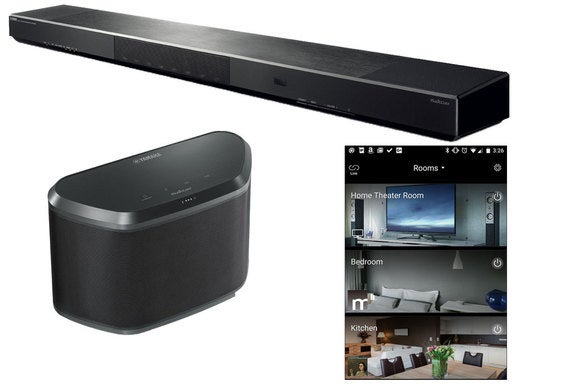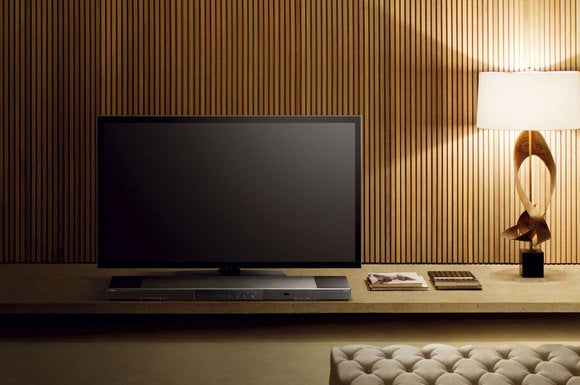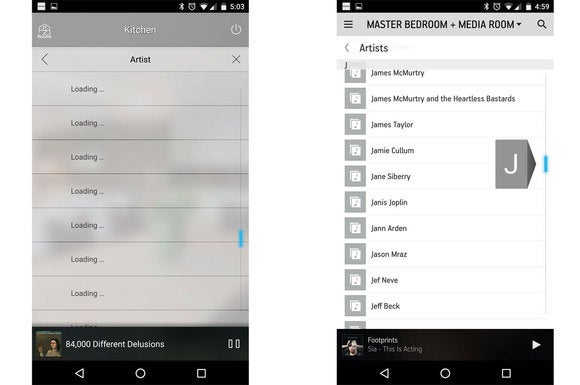
m stock photos to represent the rooms you place them in. Processes such as linking rooms together, choosing sources (servers, streaming services, and what have you), and controlling each zone’s volume levels are intuitive and easy to learn.

YAMAHA
The MusicCast app’s biggest weakness—especially in comparison to a Sonos system—surfaces when you’re looking for music to play. The Sonos app has a universal search feature that will search across all of your music sources, whether they’re on a local server or on a streaming service that you subscribe to. Yamaha’s app will search for music only on your phone. You must browse each of your other sources (a computer or server on your network, for instance) individually.
If you’re looking for music stored on a DLNA server, for example, you must scroll through every artist’s name (the same is true if you’re browsing by tracks or albums). That can be a very slow process if you have a large music library. Scroll quickly and a small, blue speed-scroll button will appear in the right-hand margin. Touch this with your fingertip and you’ll scroll through your library even faster, but the app won’t be able to keep up with you—you’ll just see “loading” where the artist names should be—and you’ll have to wait for it to catch up before you can see where you’re at in your library. The Sonos app will not only keep up with you, it will helpfully display the first letter of the alphabet you’re scrolling past. Take a look at the screenshots below to see what I’m talking about.

I streamed a number of tracks ripped from CD and encoded as 16/44.1 files, 16/44.1 ALAC, and 24/96 FLAC files acquired from Bowers & Wilkins’ Society of Sound service, and several 24/192 FLAC files purchased from Linn Records (although there are convincing arguments that such high-resolution recordings actually deliver less fidelitythan if they were encoded as 16/48 files). In any event, the MusicCast was able to play everything, and the three speakers remained in sync (even while I was running my microwave). MusicCast can also stream up to 5.6MHz DSD (Direct Stream Digital, the the file format developed for mastering Super Audio CDs), but only on its MultiCast-enabled A/V receivers, Hi-Fi components, and powered monitor speakers. DSD streaming isn’t supported on Yamaha’s YSP-1600 sound bar or WX-030 wireless speaker.
The MusicCast’s high-resolution streaming promises sound almost too good to be true, when you consider that streaming even just a 24/192 FLAC file requires more than 4.5Mbps of bandwidth. Yamaha gets around this limitation by playing high-resolution files only on the master speaker (the one used to initiate the stream). The rest of the speakers on the network play a stream that’s been down-sampled to 48kHz. That’s still very good resolution.
[“source -cncb”]




